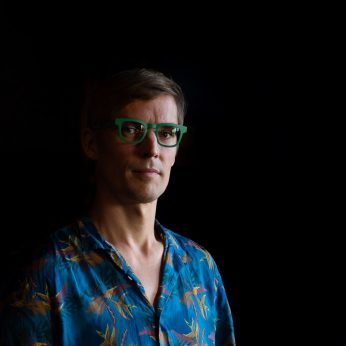Composer: George Benjamin (b. 1960)
Performance date: 25/06/2023
Venue: Bantry House
Duration: 00:15:34
Recording Engineer: Tom Norton, RTÉ
Instrumentation: pf
Instrumentation Category:Solo
Artists:
Cédric Tiberghien -
[piano]

Shadowlines [2001]
1.Cantabile
2 Wild
3 Scherzando
4 Tempestoso
5 Very freely, solemn and spacious
6 Gently flowing flexible
Born in London, George Benjamin was educated privately and showed early promise at the piano. From the age of fifteen, he was a student of Olivier Messiaen in Paris. Messiaen reportedly said that Benjamin was his favourite pupil. At King’s College Cambridge Benjamin studied under Alexander Goehr and Robin Holloway. Benjamin has led a successful career as teacher, conductor and composer. He was a professor of composition at the Royal College of Music before following Harrison Birtwistle to a chair at King’s College London. Now in his sixties, Benjamin has composed four operas; and much orchestral, chamber and instrumental music. He is considered one of the leading British composers.
Although something of a child prodigy, Benjamin experienced considerable difficulties in finding his compositional “voice” in his twenties. He was drawn to Indian musical traditions and also experimented with the smallest possible intervals between notes e.g. the seventh or eighth tones. For some time his output was modest. It appears that Webern became an important influence. As he himself remarked, “occasionally one has the fortune to encounter works which expand one’s horizon as a composer. In the mid-1990s, I conducted Webern’s Symphony opus 21 for the first time….”
Shadowlines was commissioned by Betty Freeman and written for the French pianist Pierre-Laurent Aimard, an old friend of Benjamin. Its subtitle is “six canonic preludes for piano”. The idea of using the canon as a foundation was first suggested by Goehr. Benjamin thought that the canon was “a dry, antiquated relic from academic treatises, the musical equivalent of eating stale bread”. However Webern’s rigorous and disguised serial canons became an inspiration for the canonic features of Shadowlines.
The simplest canon consists of two voices; a lead voice which is followed by a second voice playing the same material a few bars behind. However in the history of classical music there are many kinds of canon of varying complexity. Benjamin may have invented a couple more in this work. He uses the canon as a way of creating “hidden, though intensely simple and strong internal architecture.”
The work’s six movements form one whole. As the work progresses, the movements gain in intensity and the fifth movement, which is also the longest, is the emotional centre of the work. It may not be immediately obvious to the listener but each movement is based on a different kind of canon.
The opening movement is a short meditative prelude which could be an improvisation. This is followed by two short movements where the “canonic features” are fairly clear. The second movement begins with fierce high treble discords followed by softer music lower down the keyboard. By contrast, the rapid scherzando is confined to one and half octaves in the centre of the keyboard and has an almost jovial character. The fourth movement begins in a grander style but lives up to its title of tempestoso. The composer writes of the fifth movement “at its heart is a slow ground bass over which builds a widely contrasted procession of textures”.
As one critic wrote after the first performance in 2003 “the first major piano work of the 21st century. Technical rigour and ingenuity lie behind everything, as they do in Bach; but as in Bach they disappear in the expression of feeling”.
David Winter
Copyright © 2025 West Cork Music. All rights reserved.
Designed and developed by Matrix Internet